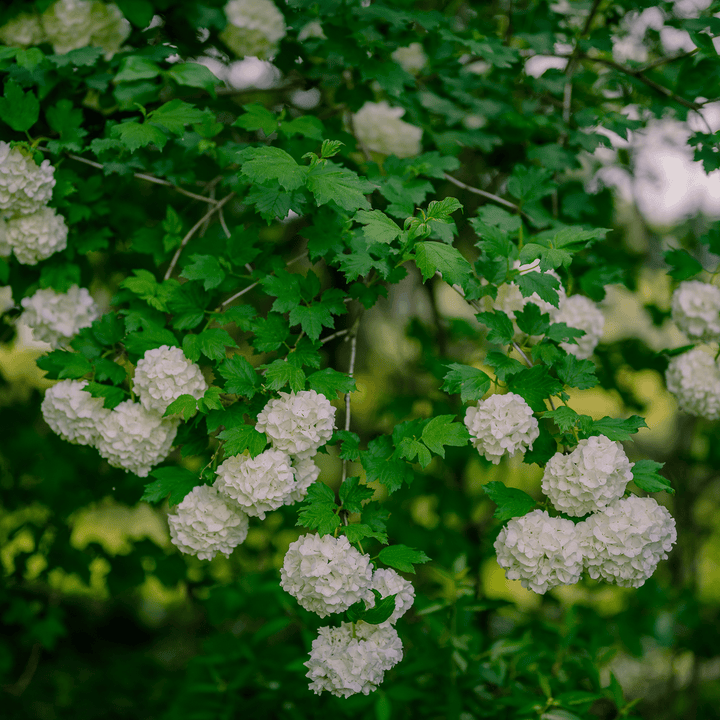Hardy deciduous shrub
Description: Large balls of white blossoms in late spring or early summer; sterile flowers do not produce fruit; orange-red fall color
Habit: Grows to 12 feet high and wide, but responds to pruning after flowers fade
Culture: Plant in well-drained, moderately rich soil in full sun or part shade; once established, shrubs will thrive with minimal care
Hardiness: Cold hardy to USDA Zone 3
Attributes: Fall color
Jefferson documented
This sterile garden form was known in Europe by 1554 and has been a favorite ever since. The flowers, described in 1770 as "balls of snow, lodged in a pleasing manner all over its head," have inspired other common names such as Whitsun-boss, Love-roses, and Pincushion-tree. On April 16, 1807, Thomas Jefferson planted V. opulus rosea on the "N.W. brow of the slope" of Monticello Mountain. That same day he also planted the species Gelder Rose or Cranberry Viburnum, V. opulus.
Details
| Genus | Viburnum |
|---|---|
| Species | opulus roseum |












